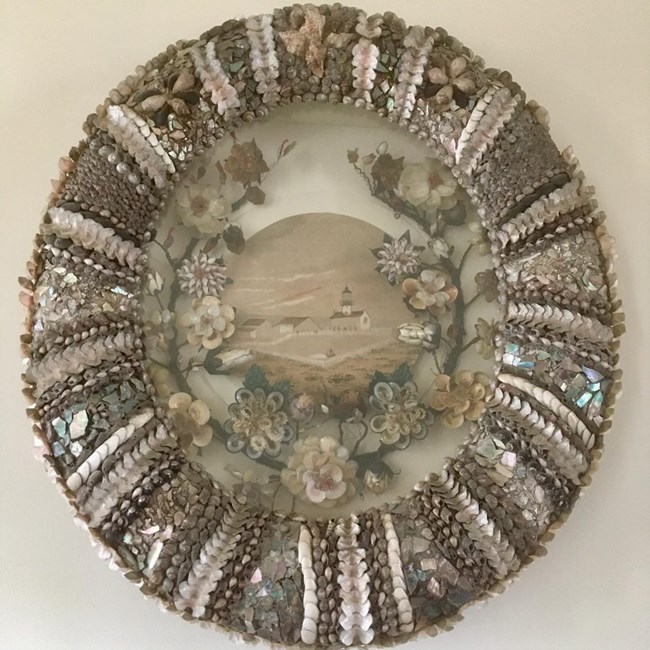Part of a series of articles titled Women's History in the Pacific West - Lower Colorado Basin Collection.
Next: Erma Ouida Godbey
Article

National Park Service, Cabrillo National Monument photo
María Arcadia Alipás Israel’s experiences embody the nature of the work at the old Point Loma Lighthouse during the initial decades of California statehood. She lived and worked in the lighthouse for 18 years, for a time as assistant lighthouse keeper, and her presence is still evident at the site today through displays of her craftwork. María Arcadia Alipás was born around 1835 to Damasio and Juana Machado de Alipás, a prominent Spanish family in San Diego, which was located in the northern Mexican province of Alta California.1 She married Robert Israel, a Pennsylvania veteran of the Mexican-American War in 1852, three years after Mexico surrendered California to the United States.2
Like many Anglo men, Robert Israel benefitted from marrying into a prominent Californio family.3 Such unions helped migrants become part of the gentry and important kin networks, and made Mexican Californians more secure within the United States. The Machado family provided the connections for Robert Israel to gain a foothold in ranching, horse raising, local politics, and in 1871, to acquire the position of assistant lighthouse keeper.4 María did not move to the lighthouse until after the birth of their last son. It is possible that she remained on their ranch until Robert was promoted to keeper in June 1873. María was hired as a paid assistant lighthouse keeper later that year, a job she held until February 1876.5 María Israel’s work at the lighthouse was essential for the function of this institution that guided ships arriving at one of the U.S. West Coast’s central ports.
As assistant keeper, Israel balanced lighthouse duties with mothering. She likely kept the nightwatch. Her grandson recounted that during her watches she sat in the stairwell and sewed under a beam of light from the lens.6 The lighthouse and living quarters had to be kept very clean, without dirt and dust, to meet the specifications of the Lighthouse Board. Rooms had to remain orderly, everything in its place, and buildings frequently whitewashed.7 Because of the remote location of the lighthouse and the nature of the weather, water was always a problem. She fought against unwieldy soil and very limited resources to maintain a garden to help feed her family, which included her husband, sons, and a niece who was also in Israel’s care.8 Israel made raisins from her grapevine and grew hot peppers to prepare Mexican cuisine. In addition to maintaining the property, the family entertained tourists who came to the lighthouse for the great views. Her children gathered seashells, which Israel used to decorate picture frames sold to tourists.9 Two of these frames remain in the lighthouse today.10 The Israel family also hosted country dances for visitors with their sons playing instruments.11
Because the old lighthouse was often shrouded in fog, a new lighthouse was built further down the tip of Point Loma and lit in March 1891.12 The Israel family moved to the new location. Robert Israel was discharged from his keeper position in January 1892, and the family returned to ranching.13 The restored lighthouse that visitors see today reproduces the living quarters as they were when Israel kept watch and sewed under its light. María Arcadia Alipás Israel’s labors exemplify the ways that women sustained the economic stability of institutions at the heart of California maritime industry and tourism.
Part of a series of articles titled Women's History in the Pacific West - Lower Colorado Basin Collection.
Next: Erma Ouida Godbey
Last updated: February 22, 2022